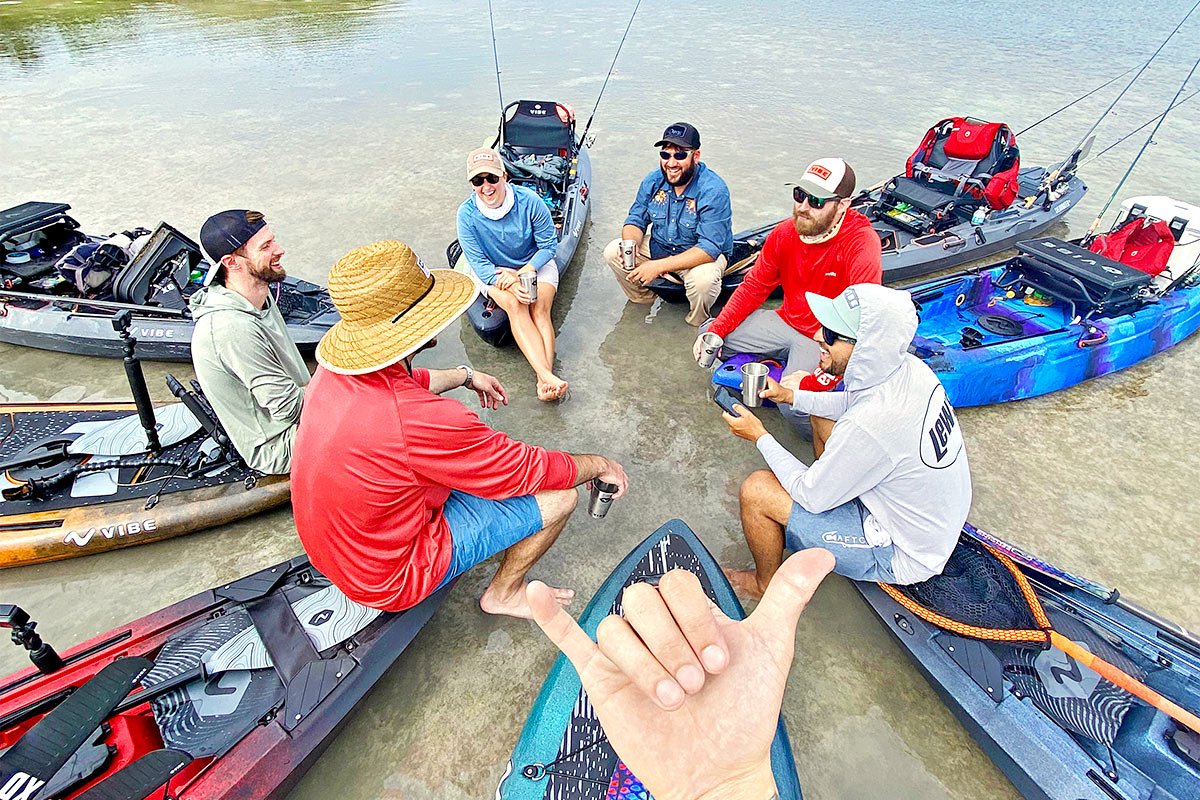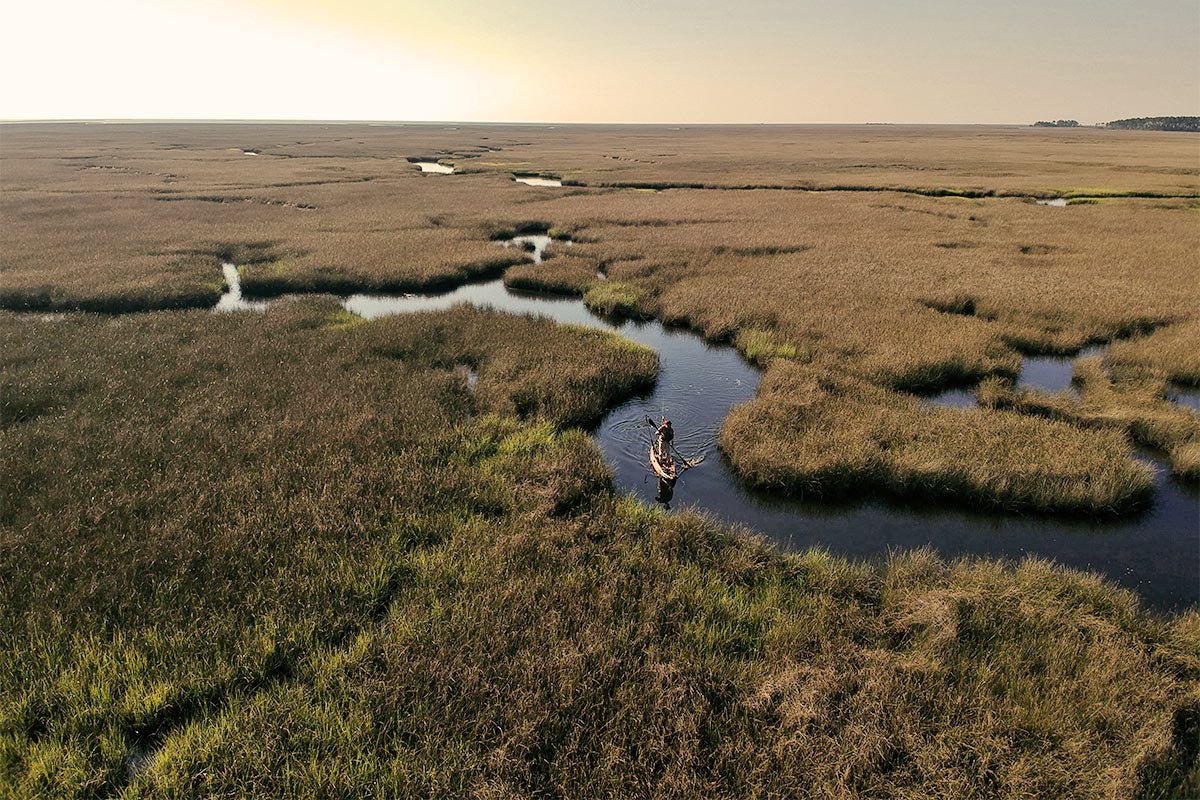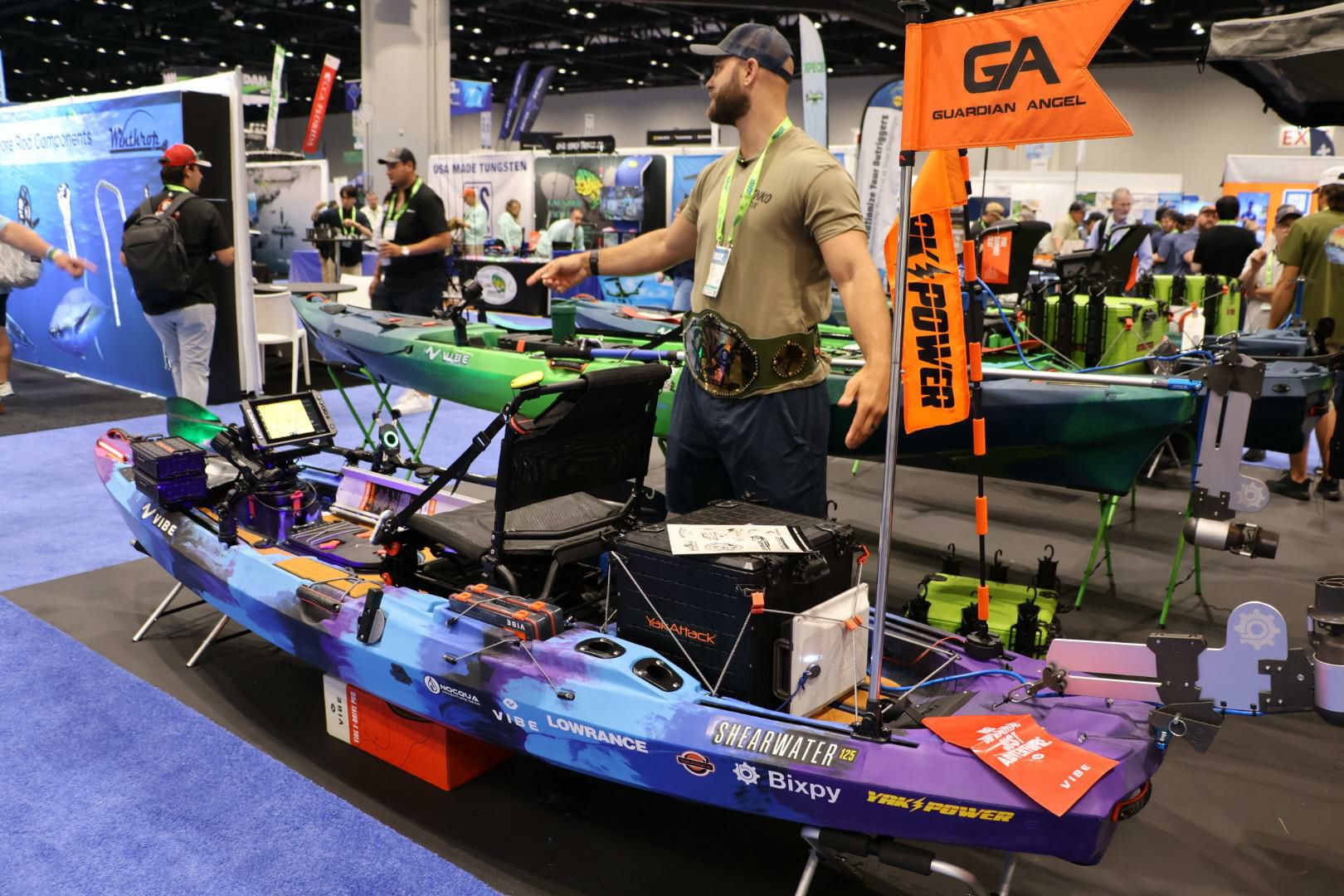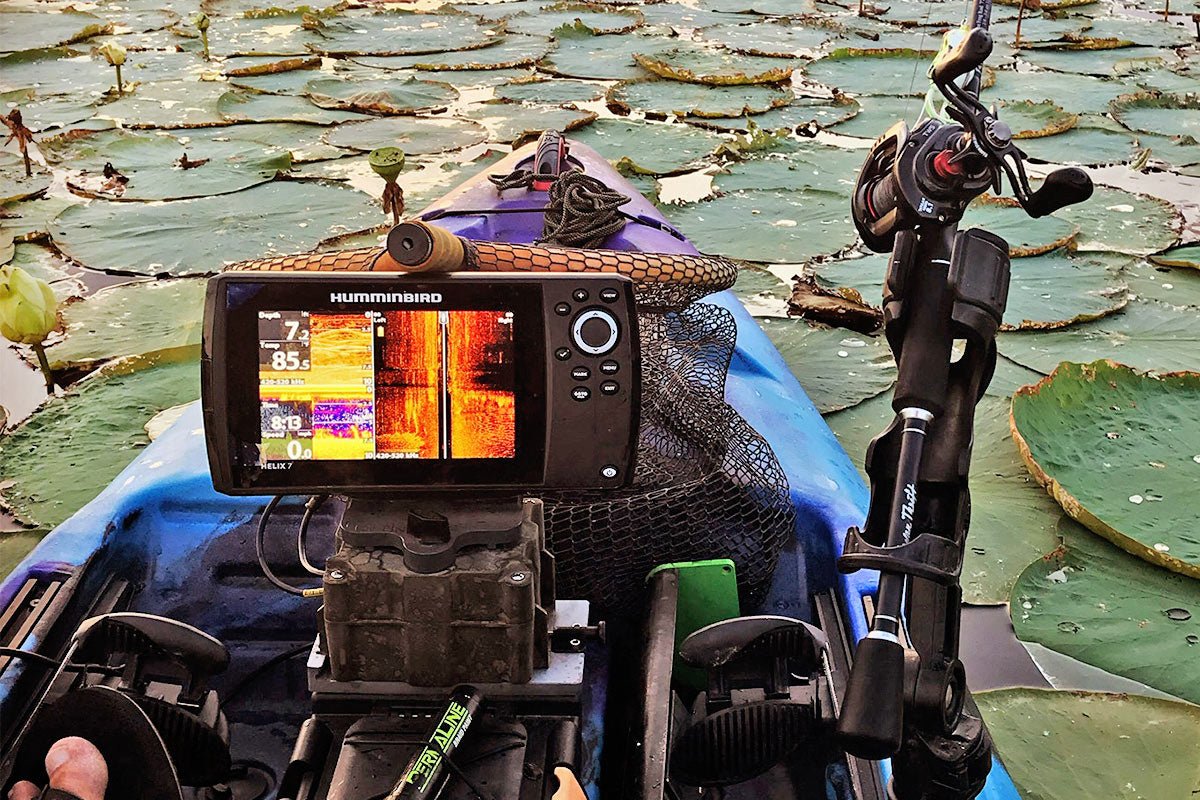How to Choose a Kayak

When choosing your next kayak – or your first – it’s important to think of the process as being similar to choosing a car. You need to decide how you’ll be using it and where you’ll be using it.
What kinds of activities will you be doing in your new kayak – such as recreational paddling or kayak-angling? Do you plan on kayaking in large rivers or lakes, or in “small or skinny” waters, or, do you plan on being on saltwater areas like bays or inshore?
Knowing the answers to these initial questions will then help you decide what features are “must-haves” and which ones you can compromise on – such as “stability”, “speed”, or “propulsion type” (ie, paddle versus pedal-drive versus motor), and other considerations.
Once you know which options you've got to have in order to really enjoy what you’ll be doing and where you’ll be doing it, you can then start down the path of picking the right kayak for you.
Here are some key decision points to help you narrow down your choices when you shop either online or at your local dealer:
Sit-On-Top Kayak Versus Sit-In Kayak
Sit-on-top kayaks are typically easiest to get in and out of. They also float if the kayak capsizes, where a sit-in kayak can fill with water and sink. No matter what your experience level or type of activity you’ll be doing, you can’t go wrong with deciding on a Sit-On-Top kayak – which are the types of kayaks Vibe engineers for both its recreational yaks and its kayak angling yaks.
How Much Weight Will You Be Carrying On Your Kayak?
You’ll want to think about the kayak’s weight capacity – especially if you are seeking a fishing kayak where you’ll be carrying more gear than just yourself, your PFD and paddle.
So consider your own weight and the amount of gear and tackle you'll want to haul. Are you a minimalist or do you like having a lot of gear close at hand? Knowing that will also help you pick the right kayak for your needs.
Recreational Kayak Versus Fishing Kayak
If just having “fun in the sun” and paddling for a few hours each outing is your primary purpose (and maybe some fishing every now and again), then a sit-on-top recreational “all adventure” type kayak such as the Vibe Yellowfin 120, or 100, or tandem 130T will be perfect.
However, if you plan on spending a decent amount of your kayak time fishing, then you will most definitely want to look at “fishing kayaks” specific to this type of activity, because it will not only make your time on the water MUCH more enjoyable – from a comfort, and speed, and stability standpoints – but you’ll also vastly increase the chance of your actually catching fish.
Angling kayaks are designed to be stealthy (fish are hard to sneak up on), and speedy (you want to be able to go to a lot of fishing spots in a short period of time), and also more stable (which equates to being safer, so you are less likely to capsize if you move around your kayak while fishing).
The Thrill of Kayak Fishing
Kayak fishing combines the quiet of paddling low on the water with the thrill of reeling in a fish that will feel way bigger on the end of your line when you're on a kayak than if you are on a bank or in a traditional boat. With a kayak you can also be far stealthier than any traditional motor boat as you glide over waters to your fave fishing spot and sneak up on fish without spooking them.
Where Do You Plan On Fishing?
Where you plan to fish is another factor in deciding the type of kayak you’ll need. Are you fishing in moving or still water? Will you spend a lot of time sight fishing or trolling?
Smaller lakes and ponds: If you’re fishing in flat calm waters where speed isn’t quite as much of a concern, a shorter, sit-on-top kayak with stability and a decent amount of speed may be a good choice, such as the Sea Ghost 110, Yellowfin 120 or Yellowfin 100.
Open water: If you need to cover a LOT of water (whether on a large lake or offshore) to get to your favorite fishing spot, you may want a longer, narrower sit-on-top kayak that tracks better and moves faster over distances, such as the elite Shearwater 125 or Sea Ghost 130, or Cubera hybrid SUP 120, or versatile Yellowfin 120.
In addition, if you want to add an outboard motor to your Shearwater or Cubera to get to the honey holes even faster or avoid bad weather, then you can add an awesome Bixpy K-1 Outboard Kit in moments.
Rivers and streams: When fishing rivers or small streams, consider a shorter kayak that is easy to maneuver in tight spaces and can turn better, such as the Sea Ghost 110, or Cubera hybrid SUP 12 0, or Yellowfin 100.
Ocean: With wind, waves, currents and tides to consider, a boat with a rudder system can help you navigate better, such as the Shearwater 125, or Sea Ghost 130, or Yellowfin 120.
Propulsion: Do You Prefer To Paddle, Or Pedal, Or Use Power?
Paddle option = For most people, kayaks are about grabbing a paddle and paddling. Otherwise, you’d probably just choose a skiff with an outboard motor on the back, or another type of powerboat.
Motor option = However, many kayak anglers use a quieter trolling-type motor to get more quickly and less effort from one fishing spot to another than they can with a paddle, but any kind of power motor will cause a lot more sound and wake, which scares away fish.
Pedal option = The “in-between” option is what is called a “pedal drive” which propels the kayak using your feet.
A fishing kayak with a pedal drive option will be more expensive than one that just offers a paddle, but there are definitely some affordable options amongst premium pro level fishing kayaks. Prices for premium pedal driven fishing kayaks range from the very budget-friendly Shearwater 125 at well under $2000 and then jumps to $3000 and $5000 for other top-brand manufacturers.
Pedal drives typically drop quite easily into your fishing kayak and lock into place, the differences between the various pedal drives on the market are the way in which their propulsion works on the water: either using “fins” which slice through underwater weeds, are strong but lightweight, and can get into very shallow waters – like that used with the Vibe X-Drive on the Shearwater 125, and on ‘fin pedal drives’ on select other kayak brands – or the propellers found on most other brands’ pedal drive fishing kayaks which are by nature heavier and more easily get caught up and stop in underwater flora.
What Kayak Features Do You Want Or Need?
Whether you are seeking to buy a recreational kayak or and angling kayak, there are certain features you’re gong to want – because they’ll make your time on the water way more fun and comfortable.
If you’re set on buying a fishing kayak, then most fishing kayaks come with a range of features for your fishing needs, from rod holders to mounts that allow you to customize the kayak with your favorite accessories to tailer to the waters and species you'll be fishing.
Here are some of the top features:
Seats: Finding a comfortable seat is like finding a shoe that fits. It’s worth the time to do it. Test the seats out for comfort, back support, seat cushion and where it hits on the back of your leg. On some kayaks, you can remove or move the seat to stand in the boat, or you can adjust the height or recline the seat.
The four-way adjustable Vibe Summit Seat is the most all-day, all-weather comfortable seat available anywhere, and it comes with different easily adjustable seating positions for when you need to get higher for sight-fishing, or if you want to make it easier for power paddling, or for just relaxing.
With regards to sight-fishing, the optional Vibe Summit Perch can be added to the back of the Summit Seat or the Hero 2.0 Seat – the Hero 2.0 fits almost all of Vibe’s kayaks – to give you a full 16-inches above the water, whether seated or standing on the Perch!
Storage options: Are you a minimalist or one of those paddlers who has to have a cooler, tackle box, and other fishing necessities with you? Storage options on most of Vibe’s kayaks include hard, enclosed hatches in the bow or midship for dry storage; large tank wells with room for your milk crate; or other storage container or bungee cords to secure dry bags.
You can also add your own storage “compartments” via Vibe’s Mesh 3-Pocket Gear Organizer, Mesh Tackle Tray Sleeve, Mesh 30oz Bottle Holder with Bottle, as well as dry bags, and tackle trays.
Also, one benefit to sit-on-top kayaks is that you have readier access to much of your gear that’s kept on top as well as inside the hatches.
Oh, and if you don’t have a tethered waterproof cell phone case dry bags, then you have to get one. It’s such cheaper than a new phone.
Gear tracks: Slide tracks let you attach accessories such as Go Pro mounts and fish finders to your kayak without drilling holes. If yours doesn’t come with gear tracks, you can install them.
Standing decks: If fishing while standing is important to you, look for footwells that are designed for standing. Some may allow you to add support bars or assist straps.
Rudders: Kayaks with rudders help with tracking in wind. The rudder angle can be constantly readjusted via foot pedals, so it’s more responsive to changing conditions when you’re on the move. You may be able to install a rudder later on some kayaks.
Rod holders: Many kayaks have mounted rod holders or molded-in rod holders, or grooves on the sides for your rods to fit horizontally. You can also easily install rod holders to your kayak.
All of Vibe's Sea Ghost series, and Yellowfins series, and the Shearwater have built-in rod holders.
Motor drive: For those looking to get to fishing spots without the tired legs and arms, Vibe also sells kayaks that can be outfitted with a motor.
Choosing the right kayak for you comes down to primarily knowing what YOU want to do in your kayak, and where you want to be doing it. From there you can easily dial in on the best kayak for you, based upon answering the questions above.
As always, Vibe’s Customer Experience Team is available to help you every step of the way. Have fun and be safe!



